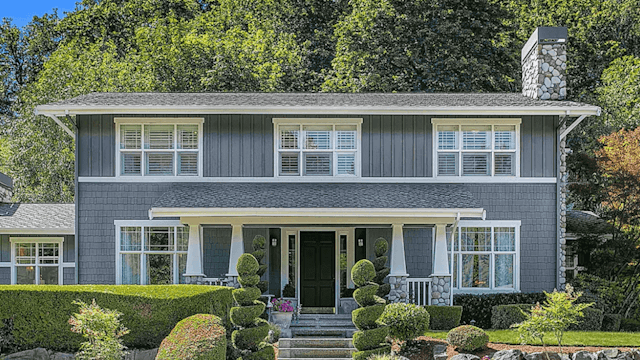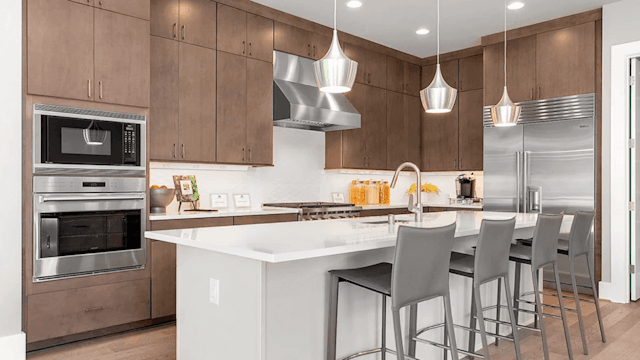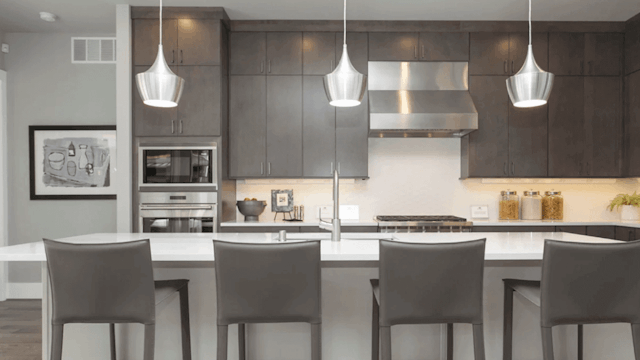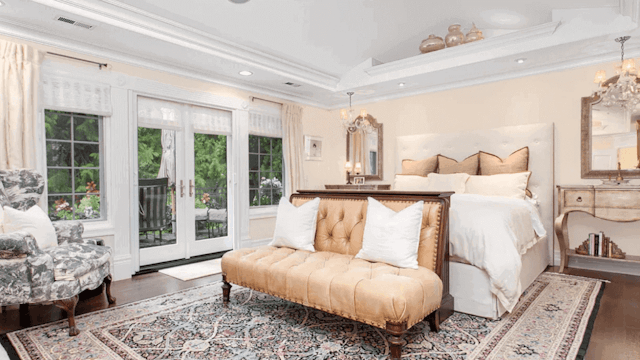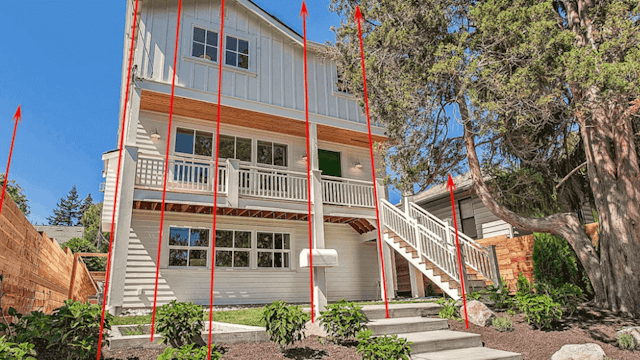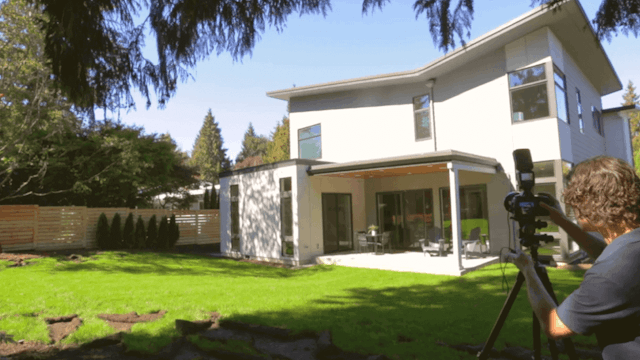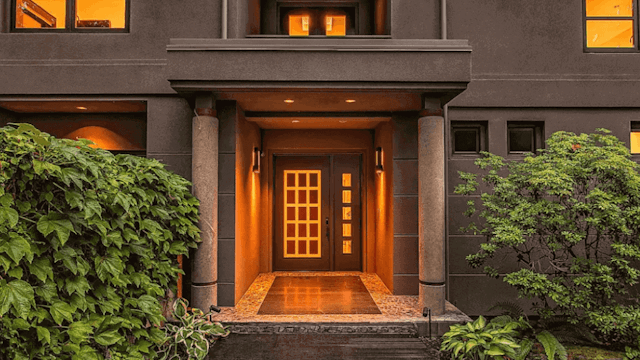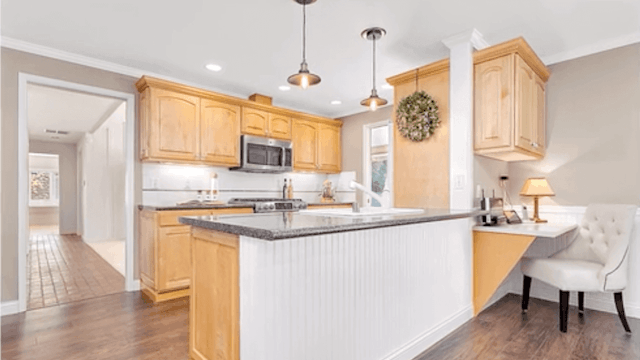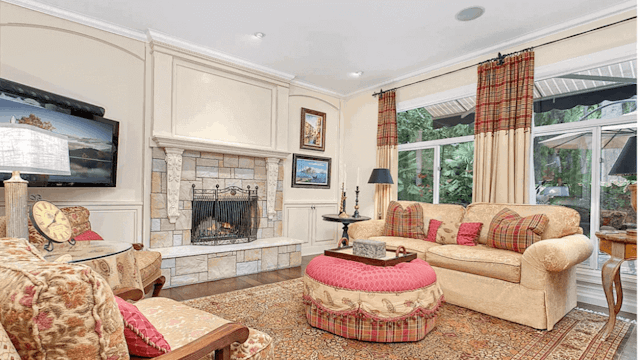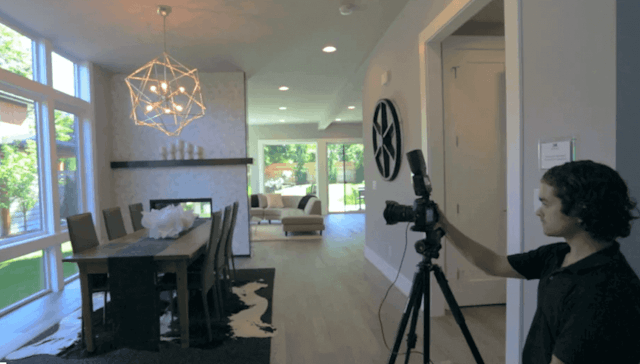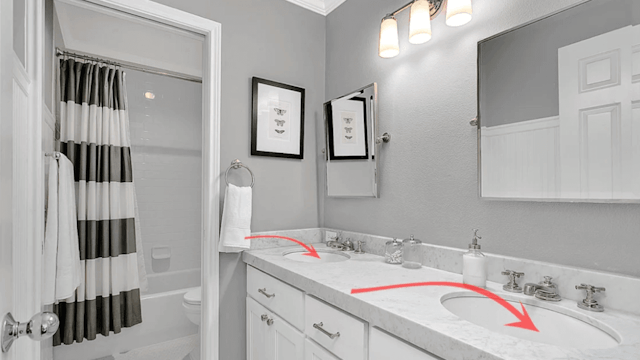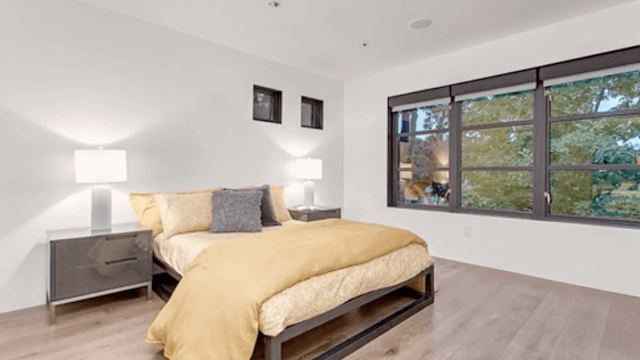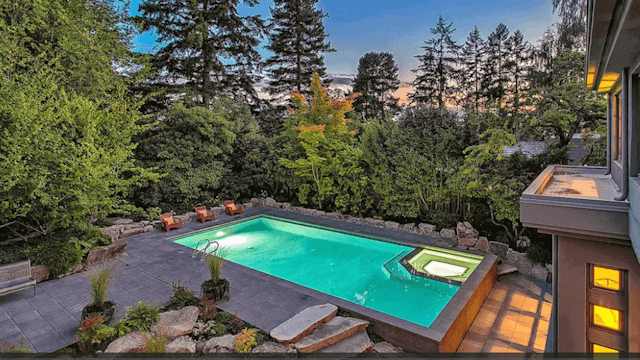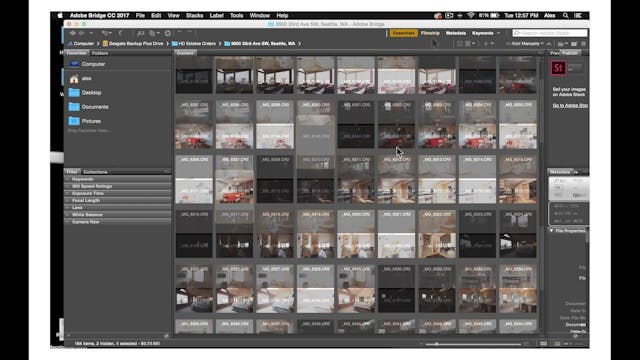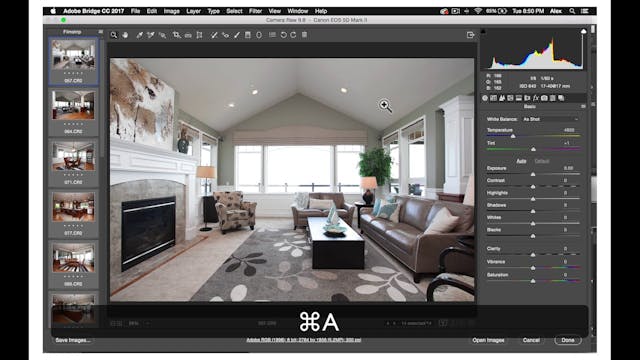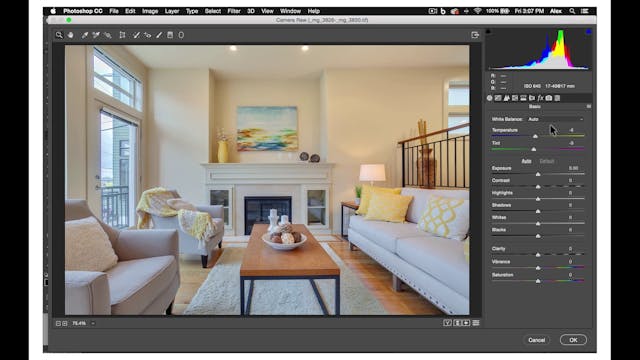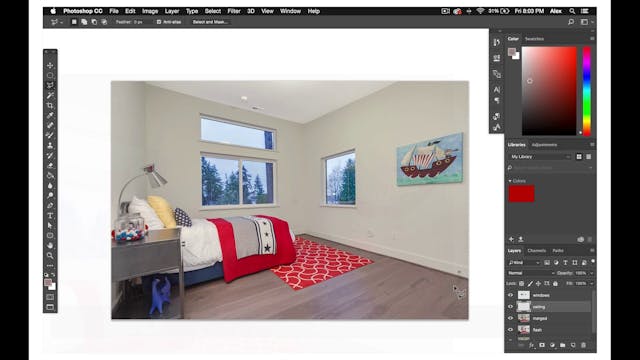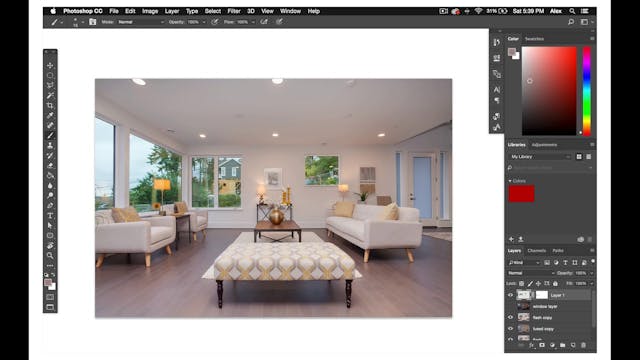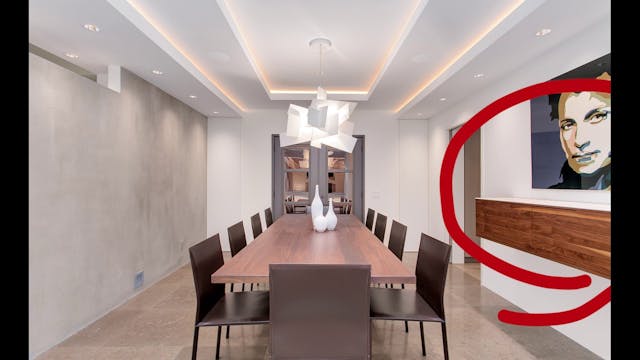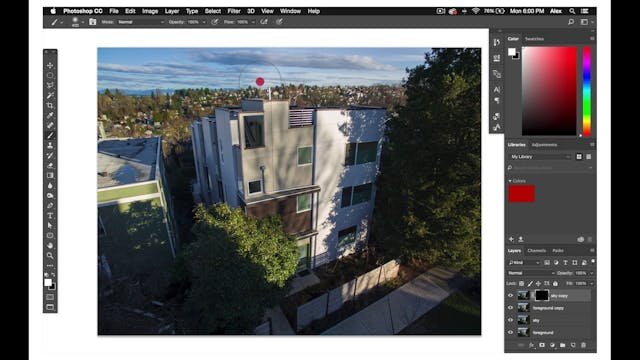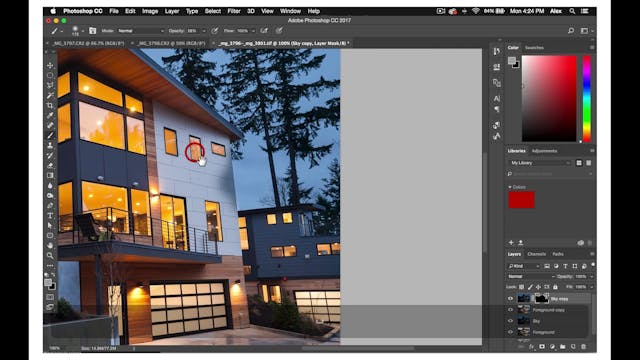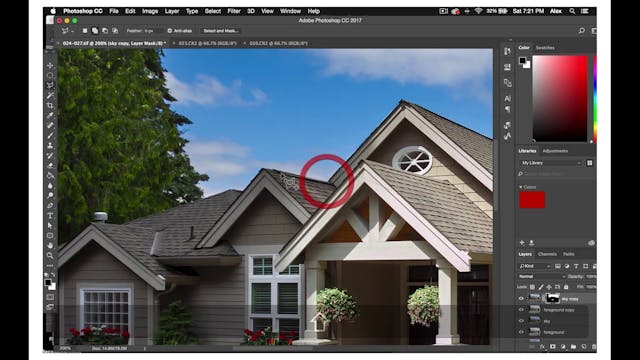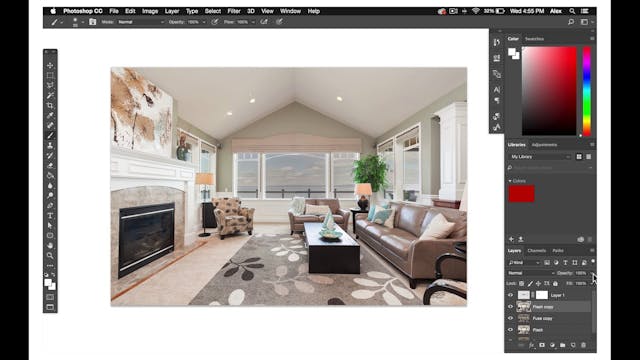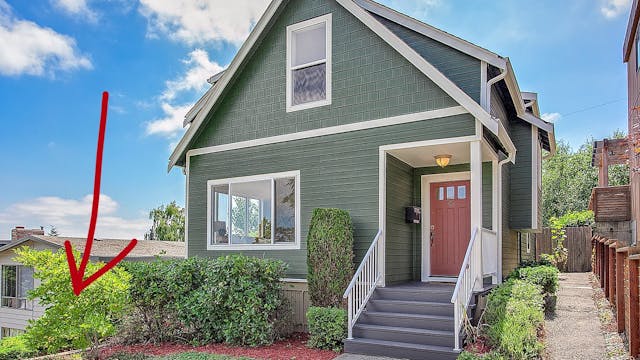Porch photos are almost exclusively two point perspective shots. Often times it's desirable to backup camera up through the sliding doors to capture more of the space. Like backyard shots, use discretion when choosing which corner to shoot from; taking into consideration Sun placement and what you're looking out at. For example, if you're looking out at a neighbor's house shooting from one side of the porch and a wall of greenery shooting from the other; then shoot towards the greenery. Agents are oftentimes want to highlight a property’s surrounding landscape since views of water, mountains and cities skylines can substantially increase a listings value. When you tour a property with a view, take note of which vantage point will best highlight the view.
This is oftentimes second floor porches or windows. For view shots, you will likely need to switch to your zoom lense so you can focus on the most spectacular section of the view. Telephone lines and roof tops can be difficult obstacles. If at all possible, position your camera and zoom in so that you can avoid these distracting features of the view. It is sometimes good idea to dial up your F-stop to 13 or 14 to increase your depth of field so that it's much of the landscape view is sharp and crisp. Do not zoom further the 200 mm, otherwise you risk deceptively fooling buyers into thinking there's a view where there is not. Finally once you have your view shot framed and focused, bracket as you would any other HDR exposure set.
Often times if a view is so expansive that one photograph doesn't do it justice, and agent will order a panoramic photo. The panoramic photographic process is much like any other view shot, except repeated across the horizon line 3 to 5 times. A couple of things to keep in mind while shooting a panoramic.The real estate photo editing company will be stitching together your separate HDR photographs. This means you must make sure that there is at least one third of each subsequent composition overlapping with that of the previous one. If the overlap is too slight, the real estate editors will not be able to stitch together the panoramic. Also be sure you are consistent throughout each photo with your HDR bracketing, to ensure that each disparate HDR photo, which will be stitched into the panorama is consistent, keep track of specific shutter speeds for your dark, mid and bright exposures and repeat them uniformly.
Looking for real estate photography retouching services? We at Phixer, can help you achieve your desired real estate photos. Contact us to know more.
This is oftentimes second floor porches or windows. For view shots, you will likely need to switch to your zoom lense so you can focus on the most spectacular section of the view. Telephone lines and roof tops can be difficult obstacles. If at all possible, position your camera and zoom in so that you can avoid these distracting features of the view. It is sometimes good idea to dial up your F-stop to 13 or 14 to increase your depth of field so that it's much of the landscape view is sharp and crisp. Do not zoom further the 200 mm, otherwise you risk deceptively fooling buyers into thinking there's a view where there is not. Finally once you have your view shot framed and focused, bracket as you would any other HDR exposure set.
Often times if a view is so expansive that one photograph doesn't do it justice, and agent will order a panoramic photo. The panoramic photographic process is much like any other view shot, except repeated across the horizon line 3 to 5 times. A couple of things to keep in mind while shooting a panoramic.The real estate photo editing company will be stitching together your separate HDR photographs. This means you must make sure that there is at least one third of each subsequent composition overlapping with that of the previous one. If the overlap is too slight, the real estate editors will not be able to stitch together the panoramic. Also be sure you are consistent throughout each photo with your HDR bracketing, to ensure that each disparate HDR photo, which will be stitched into the panorama is consistent, keep track of specific shutter speeds for your dark, mid and bright exposures and repeat them uniformly.
Looking for real estate photography retouching services? We at Phixer, can help you achieve your desired real estate photos. Contact us to know more.
